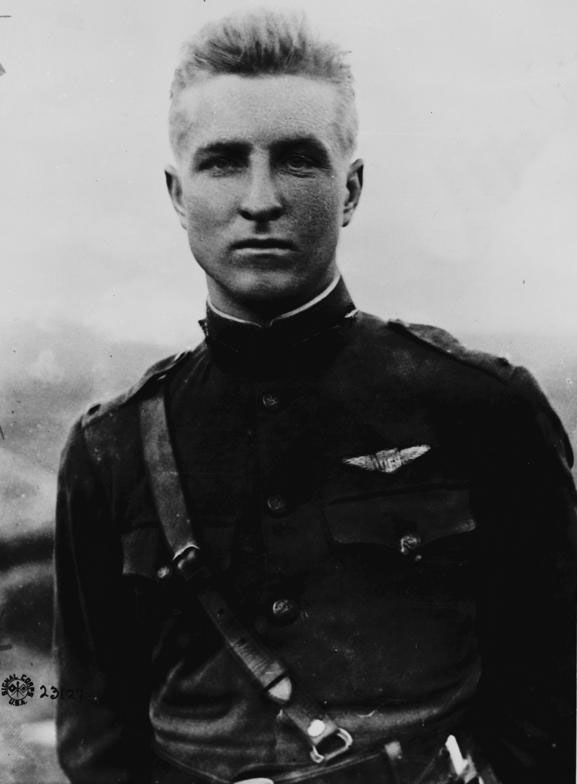Monuments
2nd Lt Frank Luke Jr., ‘Ace’, Crash Site Memorial
Rouze Main Camp/Airfield Information Sign, WW1

2nd Lt Frank Luke Jr., pilot of the 27th Aero Squadron during WWI, was the leading observation balloon killer during that conflict for US air forces. Along with his friend Lt. Joseph Frank Wehner flying cover for him, Luke downed the heavily defended balloons in a string of seemingly effortless victories. When Wehner was killed, Luke flew ten sorties in eight days, downing 14 balloons and 4 airplanes, a feat unsurpassed by any other pilot in WWI, and one undoubtedly brought on by grief.
Luke's final flight took place during the first phase of the Meuse-Argonne Offensive. On September 28, after achieving his 14th and 15th victories, he landed at the French aerodrome at Cigognes where he spent the night, claiming engine trouble. When he returned to his base at Rembercourt he was threatened with arrest by his CO for his absence. Despite this, Luke took off without authorization and flew to a forward airbase at Verdun where his sympathetic Group commander, Major Hartney, cancelled the arrest order and gave Luke tacit approval to continue his balloon hunting. That evening Luke flew to the front to attack three balloons in the vicinity of Dun-sur-Meuse, six miles behind the German lines. He first dropped a message to a nearby U.S. balloon company, alerting them to observe his imminent attacks. Luke shot down the enemy balloons, but was then severely wounded by a single machinegun bullet fired from a hilltop above him, a mile east of the last balloon site he had attacked. Luke landed in a field just west of the small village of Murvaux after strafing a group of German soldiers on the. Although weakened by his wound, he made his way toward a stream, intending to reach the cover of its adjacent underbrush, but finally collapsed some 200m from his airplane. Approached by German infantry, Luke drew his pistol and fired a few rounds at his attackers before dying. Reports that a day later his body was found with an empty gun and a bullet hole in his chest, with seven dead Germans in front of him were proven erroneous. According to author Skinner, the fatal bullet, fired from the hilltop machine gun position, had entered near Luke's right shoulder, passed through his body, and exited from his left side. On September 30th the Germans buried Luke in the Murvaux cemetery, from where his body was retrieved two months later by American forces before resting in the Meuse-Argonne American cemetery. Eddie Rickenbacker would say of Luke: “"He was the most daring aviator and greatest fighter pilot of the entire war. His life is one of the brightest glories of our Air Service. He went on a rampage and shot down fourteen enemy aircraft, including ten balloons, in eight days. No other ace, even the dreaded Richthofen, had ever come close to that."
His Medal of Honor citation reads: “After having previously destroyed a number of enemy aircraft within 17 days he voluntarily started on a patrol after German observation balloons. Though pursued by 8 German planes which were protecting the enemy balloon line, he unhesitatingly attacked and shot down in flames 3 German balloons, being himself under heavy fire from ground batteries and the hostile planes. Severely wounded, he descended to within 50 meters of the ground, and flying at this low altitude near the town of Murvaux opened fire upon enemy troops, killing 6 and wounding as many more. Forced to make a landing and surrounded on all sides by the enemy, who called upon him to surrender, he drew his automatic pistol and defended himself gallantly until he fell dead from a wound in the chest.” This account was mistranslated from the French testimonies, thereby inflating the myth around his death in years to come.
